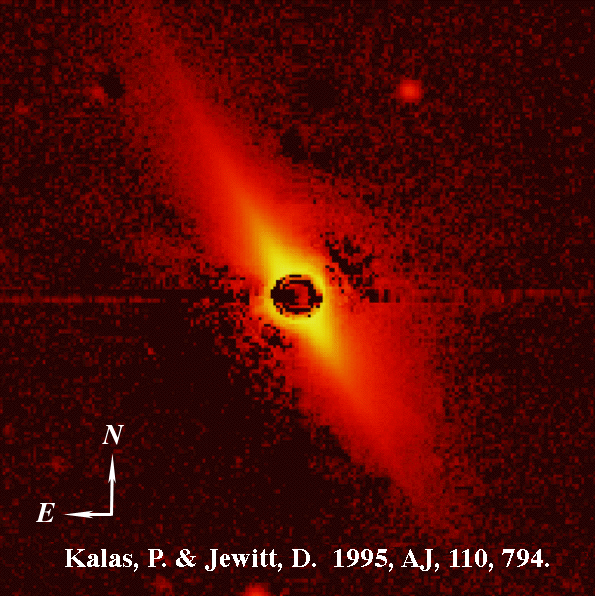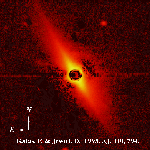
Beta Pictoris: A Main-Sequence Disk
Beta Pictoris was found to be an unexpectedly strong
source of thermal radiation (from dust) by the IRAS satellite in 1984. Soon after, Smith
and Terrile discovered an optical disk around the star. The spectrum of
Beta Pic shows red-shifted absorption lines that have been interpreted by
some as evidence for comets falling onto the photosphere.
The image above was taken using an optical coronagraph on the University of Hawaii
2.2-m telescope on Mauna Kea. It shows a dust disk extending from North-East
to South-West, with a radius of at least 600 AU. The central region of the disk
is obscured by a metal spot designed to remove direct light from the central
star. The wires holding the spot run North-South and East-West and cause
visible artifacts in the image. Scattered background light has been subtracted
from the image. Notice that the disk is not completely symmetric. A full account
of these asymmetries may be found in the paper cited on the Figure.
The Beta Pic disk is 10 times the size of the known solar system. The optical
dust has a lifetime (determined mainly by collisional destruction) that is very short
compared to the age of the star (maybe 0.1 Myr compared to 20 Myr). Therefore, the
dust is likely to have been recently created. It is possible that collisional
pulverisation of embedded, unseen comets (i.e. an unseen
Kuiper belt)
is responsible. Beta Pictoris provides an example of a so-called
debris-disk.
Last updated August 2009 by David Jewitt
